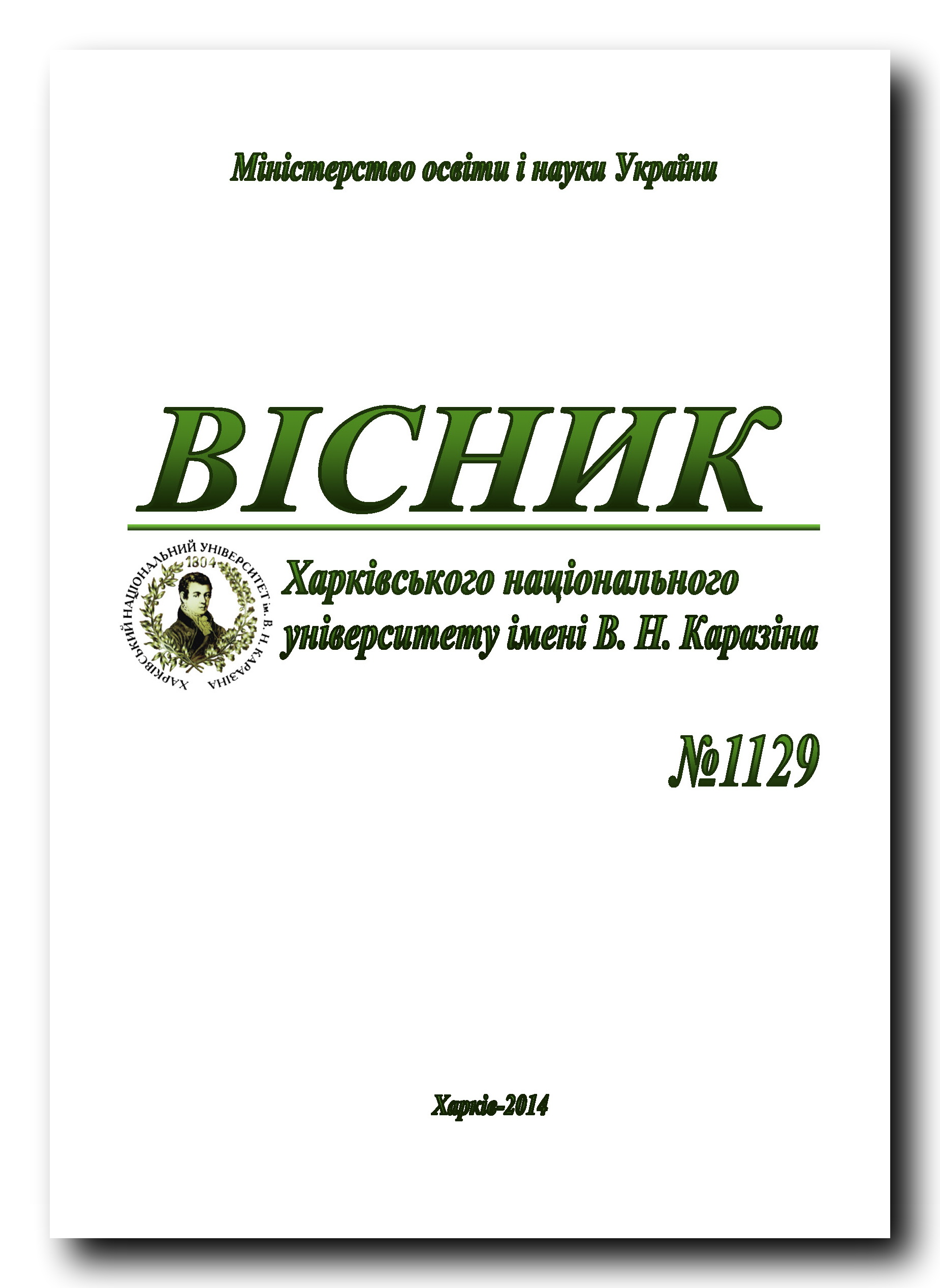Physiological and biochemical parameters of Triticum aestivum L. and Triticum spelta L. wheats under water deficit modeling
Abstract
Comparative description of the seedlings growth response of Triticum spelta L. (var. duhamelianum) seeds and Triticum aestivum L. (Selyanka cultivar, Kuyalnyk cultivar) under water stress modeling was performed. Water stress was modeled by germinating seeds in solutions of nonionic polymer polyethylene glycol 6000 (PEG 6000) with osmotic potential from -0.25 MPa to -1.25 MPa. Seedlings formed under conditions of water stress were evaluated for their morphometric parameters and content of free proline as a marker of stress response. It was established that the germination of seeds from both species under conditions of slow water supply didn’t lead to statistically significant decreasing of germination potential parameters, but led to a significant decline in the growth of seedlings and to increasing of free proline concentration in seedlings. Spelt seedlings under conditions of water stress were characterized by less significantly reducing of length and wet weight of roots (compared to the control), and higher free proline content compared to winter wheat seedlings from tested cultivars. It was shown that seed germinability, mrphometrical parameters of roots and seedlings for tested spelt landraces wasn’t lower compared to same parameters obtained for winter wheat seedlings.
Downloads
References
Веселова Т.В., Веселовский В.А., Усманов П.Д. Гипоксия и повреждения при набухании стареющих семян // Физиология растений. – 2003. – Т. 50, №6. – С. 930-937. / Veselova T.V., Veselovskiy V.A., Usmanov P. D. Gipoksiya i povrezhdeniya pri nabuhanii stareyuschih semyan // Fiziologiya rasteniy. – 2003. – T. 50, №6. – P. 930-937.
Колупаев Ю.Е., Вайнер А.А., Ястреб Т.О. Пролин: Физиологические функции и регуляция содержания в растениях в стрессовых условиях // Вісник харківського національного аграрного університету Серія Біологія. – 2014. – Вип 2 (32). – С. 6-22. / Kolupaev Y. E., Vayner A.A., Yastreb T.O. Prolin: Phisiologicheskie funktsii I regulyatsiya soderzhania v rasteniyah v stressovih usloviyah // Visnyk kharkivskogo natsionalnogo universitetu Seriza Biologiya. – 2014. – Vyp. 2 (32). – P. 6-22.
Лакин Г.Ф. Биометрия / Г. Ф. Лакин. – М.: Высш. шк., 1990. – 352 с. / Lakin G.F. Biometriya. – M. Vyssh. Sk., 1990. – 352 p.
Невмержицкая Ю.Ю., Тимофеева О.А. Практикум по физиологии и биохимии растений (белки и ферменты): Учебно-методическое пособие / Ю.Ю. Невмержицкая, О.А. Тимофеева. – Казань: Казанский университет, 2012. – 36 с. / Nevmerzhitskaya Y.Y., Timopheeva O.A. Prakticum po phisiologii I biochimii rasteniy (belki I fermenty): Uchebno-metodicheskoe posobiye / Y.Y. Nevmerzhitskaya, O. A. Timopheeva. – Kazan’: Kazanskiy universitet, 2012. – 36 p.
Almansouri M, Kinet JM, Lutts S. Effect of salt and osmotic stresses on germination in durum wheat (Triticum durum desf.) // Plant and Soil. – 2001. – Vol.231: – P. 243–254.
Araus J.L., Slafer G.A., Reynolds M.P. & Royo C. Plantbreeding and drought in C3 cereals: what should we breed for? // Annals of Botany. – 2002. Vol. 89. P. – 925–940.
Bates L.E., Waldren R.P., Teare I.D. Rapid determination of free proline for water stress studies // J. Plant Soil. – 1973. Vol. 39: – P. 205-207.
Hare P.D. & Cress W.A. (1997) Metabolic implications of stressinduced proline accumulation in plants // Plant Growth Regulation. – 1997. – Vol. 21. – P. 79–102.
Jorgensen J.R. Yield and quality assessment of spelt (Triticum spelta L.) compared with winter wheat (Triticum aestivum L.) in Denmark. In: Spelt and Quina // Working Group Meeting. - Wageningen, the Netherlands. – 1997. – P. 33-38
Kocheva K., Georgiev G. Evaluation of the reaction of two contrasting barley (Hordeum vulgare L.) cultivars in response to osmotic stress with PEG 6000 // Bulg. J. Plant Physiology. – 2003. – Special Issue. – P. 290–294.
Mahajan S. & Tuteja N. Cold, salinity and drought stresses:an overview // Archives of Biochemistry and Biophysics. – 2005. – Vol. 444. – P. 139–158.
Nayyar H. & Walia D.P. Water stress induced proline accumulation in contrasting wheat genotypes as affected by calcium and abscisic acid // J. Biologia Plantarum. – 2003. – Vol. 46. – P. 275–279.
Rampino P., Pataleo S., Gererdi C., Mita G. & Perrotta C. Drought response in wheat: physiological and molecular analysis of resistant and sensitive genotypes // J. Plant, Cell & Environment. – 2006. – Vol 29. – P. 2143–2152.
de Ronde J.A., Spreeth M.H. & Cress W.A. Effect of antisense L-∆1-pyrroline-5-carboxylate reductase transgenic soybean plants subjected to osmotic and drought stress // Plant Growth Regulation. – 2000. – Vol 32. – P. 13–26.
Smolková H., Gálová Z., Grecová E. Winter spelt wheat (Triticum spelta L.) grain proteins genetic markers // J. Chemical papers. – 1998. – Vol. 52: – P. 52–53.
Svobodová I., Míša P. Effect of drought stress on the formation of yield elements in spring barley and the potential of stress expression reduction by foliar application of fertilizers and growth stimulator // J. Plant Soil Environ. – 2004. – Vol. 50 – P. 439–446.
Authors retain copyright of their work and grant the journal the right of its first publication under the terms of the Creative Commons Attribution License 4.0 International (CC BY 4.0), that allows others to share the work with an acknowledgement of the work's authorship.




